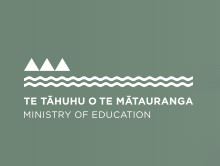Develop an Action Plan from a Brief
A Brief
A brief is a description of the intended outcome and the constraints that will be met by the solution.
A brief discusses the need identified, and the opportunities or issues to be addressed. It contains detailed specifications from which the solution is constructed and tested. As the work progresses the brief and the specs may be amended as the students gets a clearer picture of the intended solution.
Action plans show progressive steps towards achieving an action or goal, stated in the brief. An action plan will take account of some or all of the follow learning activities, that inform the research:
- Interviews
- Site visits
- Client discussions
- Internet
- Journals, texts and other hard copy sources
When students plan goals it is because they have evaluated the issues and the need and can plan a pathway forward. Remind them that goals should be:
Specific (Details)
Measurable (How do I know if I’ve completed?)
Achievable (Am I actually able to do this?)
Realistic (Does this fit within my parameters of work?)
Time Framed (When do I need to have this goal completed?)
Considerations and Constraints
Students should think about:
Materials. What do I have access to? Are the materials suitable? Is there a negative environmental impact if I use these materials?
Costs. What are the costs associated with materials, the equipment needed and an effective trial of my solution? How does this compare with my budget?
Time. When and how long will this take? Is that practical? Achieveable?
Space and Equipment. Do I have access to the equipment, where is the best place to work on this solution?
Knowledge. What do I need to know more about in order to complete this?
Help from others. Who can help me? Where are the experts? How can I access them?
A simple format for creating actions plan could be:
| What | Who | When | Expected Outcomes |
Point to note
When students work towards completing their first conceptual design it is not unusual for them to change their action plans.
At each stage of achievement they should be able to ask themselves:
- Have I achieved/completed the outcomes?
- Is the outcome satisfactory?
- Can I improve it? Do I need to improve it?
- On completion is my thinking still the same?
The process is one of continual review and amendment.
Trial and error
Practical technical skills will have to be learned. The resource highlights several examples, particularly in Te Mīere Mānuka and He Wahakura.
It is the teacher’s responsibility to ensure safe use of equipment. These are skills that students must practice in order to use equipment safely. This also incudes knowing how certain materials behave under certain conditions or react to one another, and the idiosyncrasies of certain materials.
Developing a prototype
Where this is appropriate students should be encouraged to develop a prototype. From the prototype they can make further tests and conclusions about the appropriateness of the outcome as a solution to the identified need. Usually prototypes are constructed from a cheaper form of material.
The final solution
A solution is not necessarily a product. The outcome is entirely dependent on the initial need identified. A solution could be a process, an environment, or a product. A solution does not have to be tangible, it could be a waiata, a management system, or perhaps a part of an already established product or system.

